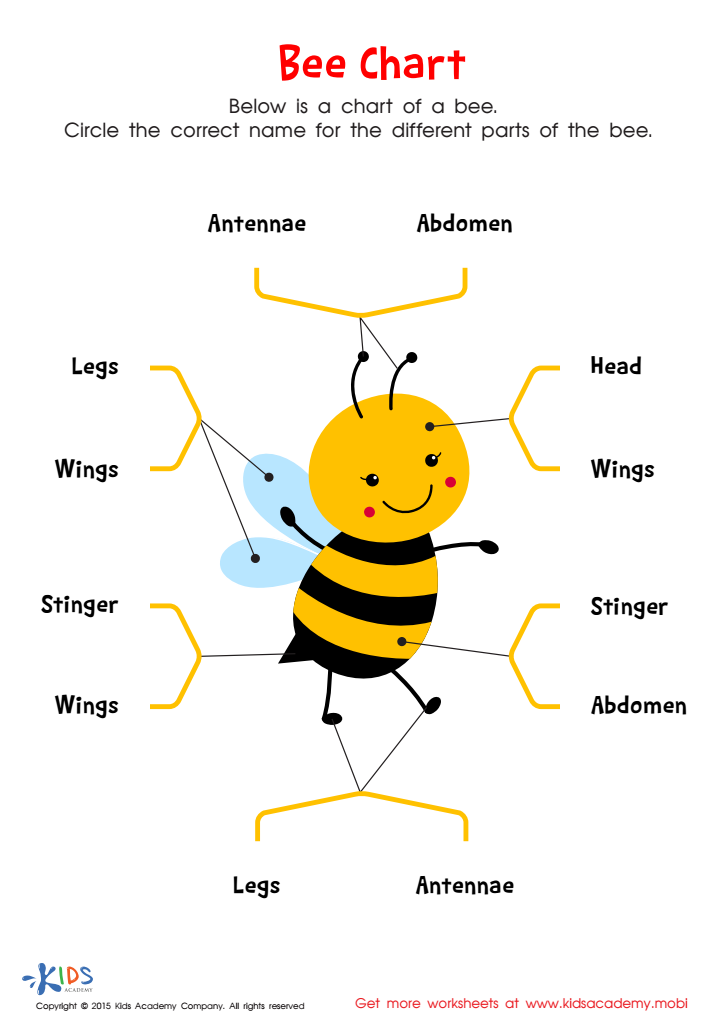Vocabulary enhancement Normal Animals Worksheets for Ages 3-6
6 filtered results
-
From - To
Discover our engaging "Vocabulary Enhancement Normal Animals Worksheets" designed for children ages 3-6! These worksheets offer a fun and interactive way to introduce young learners to various animals while expanding their vocabulary. Each activity is crafted to promote language development through colorful illustrations, simple descriptions, and exciting word associations. Children will explore animal names, habitats, and characteristics, encouraging not only vocabulary enhancement but also a love for nature and science. Perfect for parents and educators alike, these worksheets are ideal for enriching the learning experience at home or in the classroom. Unlock your child's potential in a playful and educational manner!
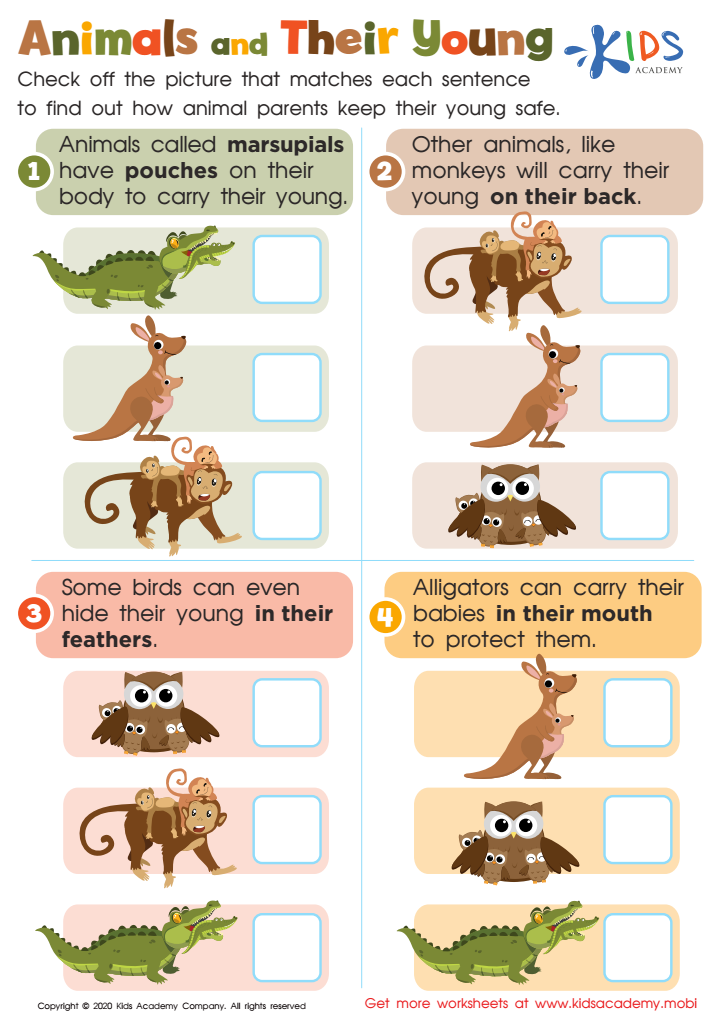

Animals and Their Young Worksheet


Animal Homes Worksheet
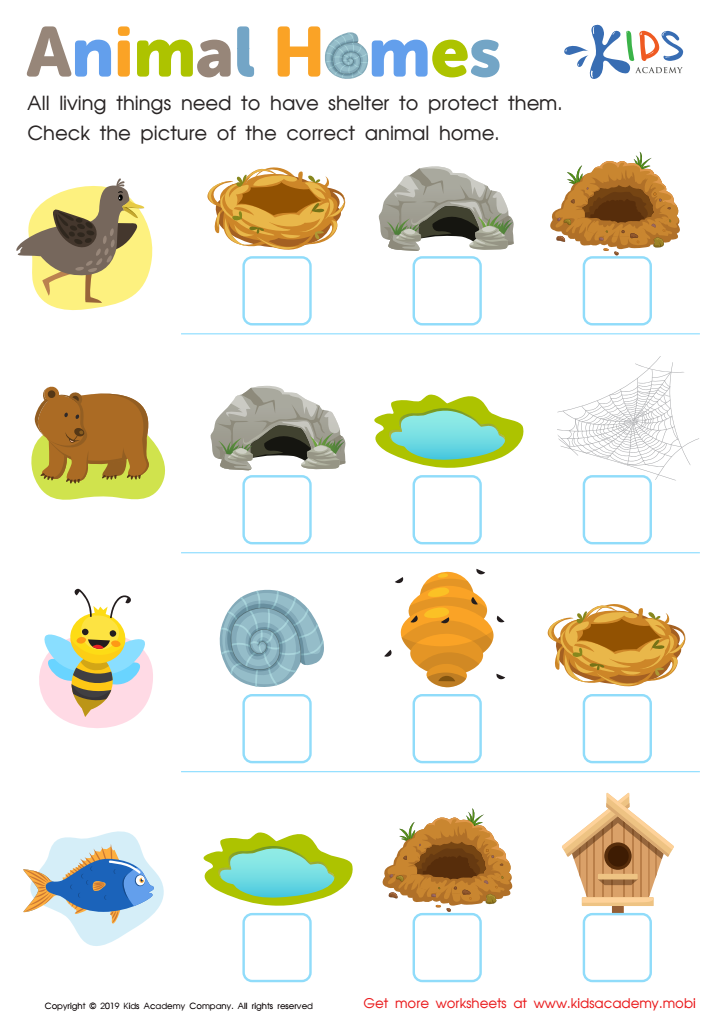

Animal Homes Worksheet
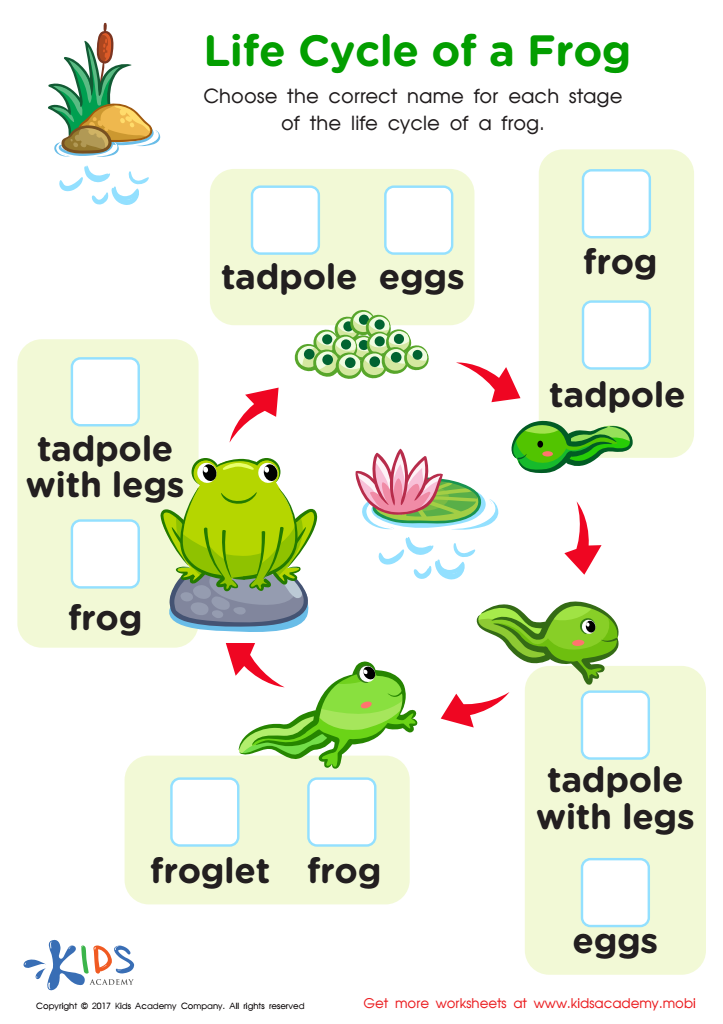

Life Cycle Frog Printable
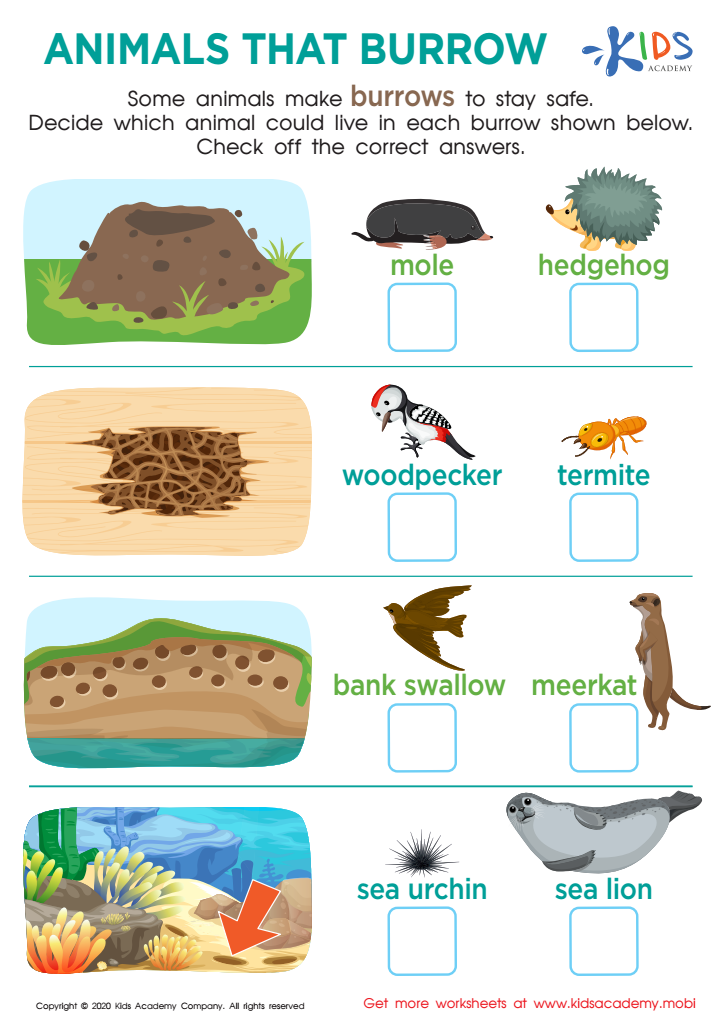

Animals That Burrow Worksheet
Vocabulary enhancement in early childhood, especially regarding normal animals, is vital for several reasons. First, ages 3-6 are crucial developmental years where language skills form the foundation for future literacy and communication. Introducing children to a rich vocabulary related to animals not only enhances their language abilities but also fosters cognitive development.
Engaging with animal-related vocabulary can ignite children’s curiosity about the natural world. It opens discussions about habitats, behaviors, and conservation, allowing children to relate words to real-world experiences. This enhances comprehension and retention while making learning more interactive and enjoyable.
Moreover, learning about animals encourages imaginative play, which is essential for social skills. Children often use animal vocabulary in games and stories, sparking creativity and collaboration with peers.
Furthermore, a strong vocabulary improves critical thinking and problem-solving skills. When children can articulate their thoughts and questions clearly, they become more confident communicators.
By prioritizing vocabulary enhancement related to normal animals, parents and teachers lay the groundwork for literacy, cognitive aptitude, and emotional intelligence. This holistic approach establishes a love for learning, preparing children for academic success and meaningful interpersonal relationships in the future.

 Assign to My Students
Assign to My Students

